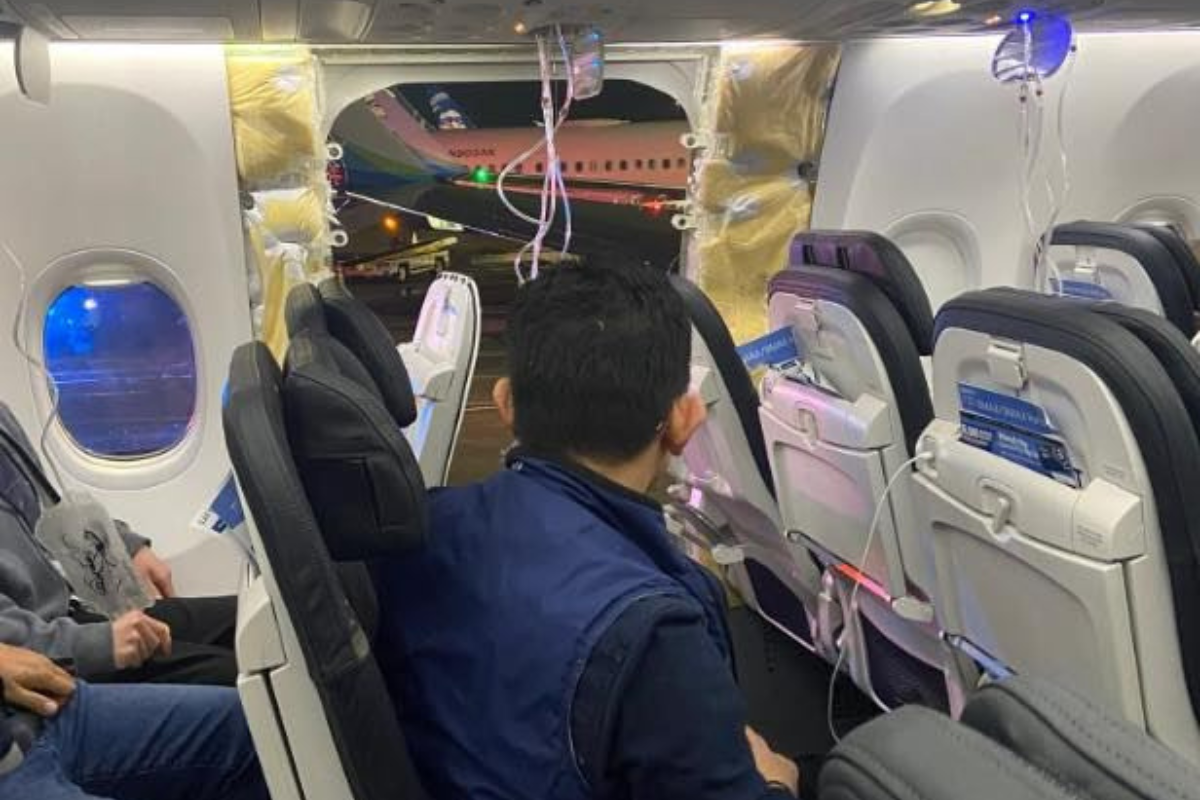A Rude Awakening: Depressurization on Alaska Airlines Flight 1282 - A Technical Breakdown
The skies above the Pacific Northwest on January 5th, 2024, took a dramatic turn when Alaska Airlines Flight 1282, a Boeing 737 Max 9, experienced a rapid depressurization shortly after takeoff. This unsettling event, fortunately without injury, sent shockwaves through the aviation community and reignited concerns about the 737 Max's safety record. Let's delve into the technical details of this incident, analyzing the events in chronological order and exploring the potential causes while acknowledging the ongoing investigation.
 |
| Depressurization on Alaska Airlines Flight 1282 |
Act I: A Normal Takeoff Turns Turbulent:
Flight 1282, with 174 passengers and six crew members aboard, departed Portland International Airport at 3:39 PM PST. Everything seemed routine until approximately four minutes into the climb, when a loud bang erupted amidst a sudden pressure drop. Passengers reported a gaping hole near the fuselage, presumably where an optional, unused doorway would be located. The emergency oxygen masks deployed swiftly, and the crew, demonstrating incredible composure, declared an emergency and initiated a rapid descent to a safer altitude.
Act II: A Controlled Descent and Safe Landing:
Maintaining cabin pressure is crucial for passenger safety and aircraft functionality. The pilots expertly initiated a controlled descent, prioritizing the well-being of everyone onboard. While details remain scarce, reports suggest the crew followed established emergency procedures and skillfully maneuvered the aircraft back to Portland, where it landed safely at 4:08 PM PST. The prompt response and skilled actions of the crew undoubtedly played a vital role in this positive outcome.
Act III: Grounding and Investigation:
The incident triggered immediate reactions. The Federal Aviation Administration (FAA) promptly issued a temporary grounding order for all Boeing 737 Max 9 aircraft operating in the United States. This precautionary measure highlights the seriousness of the event and prioritizes passenger safety while the investigation unfolds. The National Transportation Safety Board (NTSB) dispatched a team to investigate the cause of the depressurization, meticulously examining the aircraft, interviewing crew and passengers, and gathering all available data.
The Technical Puzzle: Unraveling the Cause:
While the investigation is ongoing, several possibilities emerge based on initial reports:
- Plug Failure: The hole reportedly appeared near an unused door location where a "plug" seals the fuselage in the absence of the actual door. This plug's failure, whether due to manufacturing, maintenance, or environmental factors, is a potential explanation for the depressurization.
- Structural Issue: Although less likely, a structural defect in the fuselage near the unused door could be a contributing factor. Thorough inspections of the aircraft's structure are underway to rule out this possibility.
- Environmental Factors: While unlikely to be the sole cause, external factors like bird strikes or extreme weather conditions cannot be entirely dismissed. The NTSB will assess all relevant environmental data during its investigation.
What Lies Ahead: Lessons and Implications:
The Alaska Airlines Flight 1282 incident raises several questions and highlights the importance of continuous safety improvements in aviation. The investigation's findings will offer valuable insights and could lead to:
- Improved Plug Design and Maintenance: If the investigation confirms plug failure, its design and maintenance procedures might be reviewed and potentially revamped to prevent similar incidents.
- Enhanced Emergency Procedures: The crew's swift and competent response demonstrates the importance of ongoing training and refinement of emergency procedures for such scenarios.
- Potential Fleet-Wide Modifications: Depending on the investigation's outcome, modifications to the 737 Max 9 design or operation procedures could be implemented across the fleet to ensure continued safety.
Conclusion: A Wake-Up Call for Continued vigilance:
The Alaska Airlines Flight 1282 incident, while fortunately ending without serious consequences, serves as a stark reminder of the complexities and potential dangers of aviation. While the investigation unfolds, it's crucial to avoid speculation and respect the ongoing process. However, this incident undoubtedly underscores the need for unwavering vigilance, continuous safety improvements, and unwavering commitment to ensuring the well-being of everyone who takes to the skies.
This blog post is intended to provide a technical breakdown of the event based on currently available information while acknowledging the ongoing investigation. As more details emerge, this post will be updated to reflect the latest findings and insights. It's important to remember that aviation safety is paramount, and all parties involved – airlines, manufacturers, regulatory bodies, and the aviation community as a whole – must work collaboratively to ensure that every flight has a safe and uneventful journey.

